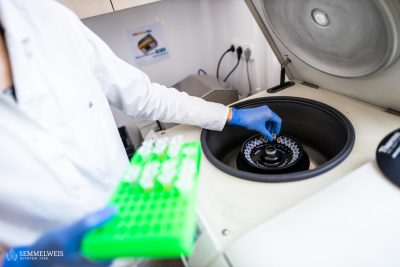 A difficult-to-detect, typically asymptomatic and often randomly diagnosed disease, MODY is overlooked because blood glucose levels are usually only mildly elevated compared to type 1 and type 2 diabetes, and it is not associated with obesity either, so no typical symptoms are detected, says Dr. Péter Tóth-Heyn, Deputy Director of the Pediatric Center at Semmelweis University. Sometimes it is only laboratory tests for a febrile illness that reveal a blood sugar imbalance, but even then, it is often not associated with MODY and is classified as type 2 diabetes. It is advisable to consult a doctor if someone has already been diagnosed as diabetic but is not showing the typical symptoms. MODY is not accompanied by a complete insulin deficiency and usually develops before the age of 25, which is why it is classified as a juvenile diabetes.
A difficult-to-detect, typically asymptomatic and often randomly diagnosed disease, MODY is overlooked because blood glucose levels are usually only mildly elevated compared to type 1 and type 2 diabetes, and it is not associated with obesity either, so no typical symptoms are detected, says Dr. Péter Tóth-Heyn, Deputy Director of the Pediatric Center at Semmelweis University. Sometimes it is only laboratory tests for a febrile illness that reveal a blood sugar imbalance, but even then, it is often not associated with MODY and is classified as type 2 diabetes. It is advisable to consult a doctor if someone has already been diagnosed as diabetic but is not showing the typical symptoms. MODY is not accompanied by a complete insulin deficiency and usually develops before the age of 25, which is why it is classified as a juvenile diabetes.
The condition, which is under-diagnosed worldwide, is genetically inherited and most commonly, in about seventy percent of cases, is caused by a defect in the so-called glucokinase enzyme (GCK). Dr. Péter Tóth-Heyn adds:
If this very gene is responsible for this rare form of diabetes, it does not need to be replenished, despite the decrease in insulin production, in fact, no medication or diet, no specific treatment is required, making it a very mild disease.
However, thirty percent of all MODY cases in Hungary are triggered by other gene mutations, which can cause more severe, typical diabetic symptoms (e.g. increased fluid intake, weight loss) at a later age. In some cases, insulin treatment or targeted antidiabetic drug therapy may be justified, combined with a proper diet and regular exercise to avoid complications later in life.
To make a diagnosis, genetic testing is needed to determine which gene is causing the disorder. As in the majority of the cases, the condition affects several generations of the family, with parents often being unaware of the disease, it is advisable to test several members of the family.
It is particularly important to monitor gestational diabetes, as insulin sensitivity changes during the nine months of pregnancy, so even a pre-existing but symptom-free MODY may lose its balance and require insulin treatment during pregnancy.
Diabetes is the most common metabolic disorder in childhood.
Type 1 diabetes affects 250 to 300 newly diagnosed children in Hungary annually, a three-fold increase in prevalence over the last 30 years. It is an autoimmune disease that most commonly affects 10- to 14-year-olds, but it is also increasingly affecting children of pre-school and primary school age, so early detection is crucial. Type 2 diabetes used to be confined to adults a few decades ago, but is now being detected in an increasing number of adolescents. The most likely causes include obesity, a sedentary lifestyle and the hormonal changes that characterize the teenage years.
Eszter Csatári-Földváry
Translation: Judit Szabados-Dőtsch
Photo: Attila Kovács – Semmelweis University; cover: iStock


